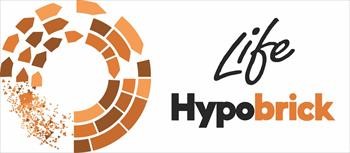Ficha proyecto representativo
Título
Towards a hypocarbonic economy in the brick industry. Development of waste-based building materials by a new sustainable process (LIFE HYPOBRICK)
Web
Video
Descripción
The project’s main objective is to demonstrate the feasibility of manufacturing waste-based building products (bricks and blocks, from now on bricks for the sake of simplicity) using an [extremely low CO2 emission process in order to accomplish the climate and environmental guidelines of the EU for reducing the greenhouse gases (GHG) emissions intensity of the industrial sector by 80% to 95% in 2050. The industries of this type of products belongs to the group of energy-intensive industries (EIIs), which is a work area of the LIFE 2018 programme. The main differences of the new process (Alkaline Activation Process-AAP, see the acronyms list in Annex 1), with respect to the traditional ceramic one are the substitution of the firing stage (conducted at temperatures above 1,000 °C) by a curing stage carried-out at low temperature (<150 °C), and the possibility of recycling a wide variety of industrial wastes. AAP is based in the dissolution of amorphous silicates and aluminosilicates by an alkaline solution, followed by the polymerisation of the resulting monomers to provide hardness and strength to the material The project will focus on the manufacturing of the new bricks in Southern and Northern European countries (Spain and Germany) in which the wastes available and the constructive requirements are quite different and cover the trends existing in a significant number of European countries. For achieving the main objective, the following specific objectives have been established: - To produce new materials for building that accomplish with all the environmental and administrative legislation. - To formulate waste-based mixtures for manufacturing the new bricks with the AAP that accomplish the technical and environmental requirements of the international standards and of the market. - To define the operating variables of the process stages involved in the AAP. - To modify the industrial facilities to allow the manufacturing of the new building material. - To solve the potential production problems that may arise during the pilot and industrial trials in order to obtain building products free of defects and with the require properties to be commercialise. - To obtain a cost-effective and economically viable building material with an innovative process that favour their commercialisation. - To make an agreement with another manufacturing company (out of the Consortium) to replicate and transfer the project results before the end of the project.
Descripción de la participación del Instituto Tecnológico
- Reduction of GHG emissions: 184 ton CO2 (92% reduction) - Reduction of acid gases emissions: 4.1 kg HF, 39.6 kg SOx, 12.7 kg HCl (100% reduction). - Reduction of Total Organic Compounds (TOC): 34.5 kg (100% reduction) - Reduction of Particulate Matter (PM): 17.6 kg (100% reduction). - Reduction of primary raw materials input (clay, flux, quartz): 1,000 ton. - Waste recycling (1,000 ton):Glass from Cathodic Ray Tubes (CRTWG): 200 ton.Fly ash from coal power plants (FA): 280 ton.Plastic from Electric and Electronic Equipment (WEEE): 20 ton.Scraps from brick production: 40 ton.Mineral fraction of Construction & Demolition waste (CDW): 60 ton.- Thermal energy reduction (that accounts for 90% of the energy input): 2,070 GJ (90% reduction).
Áreas de conocimiento y líneas tecnológicas
Sectores de aplicación
1
Tecnologías cerámicas
L1 - Desarrollo de nuevos procesos de fabricación de materiales cerámicos
2
Materiales cerámicos
L1 - Desarrollo y optimización de productos cerámicos tradicionales
3
Tecnologías del medio ambiente
L1 - Estudios de minimización de residuos
Procesos industriales
Energía y agua
Ámbito
Europeo - Programa: LIFE 2014-2020
Participación
Coordinador

 Imprimir
Imprimir









